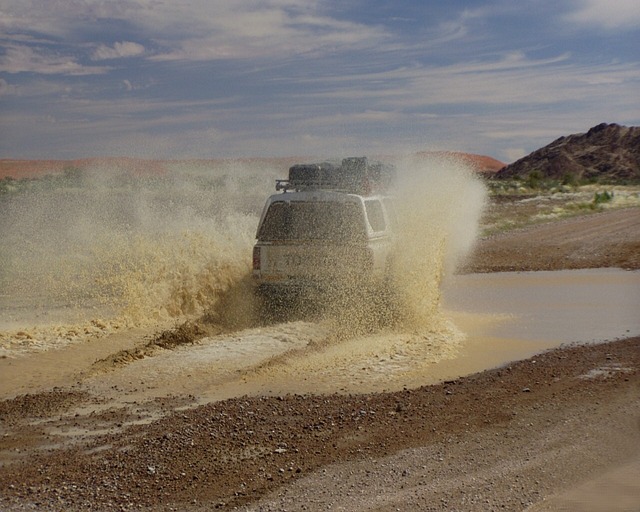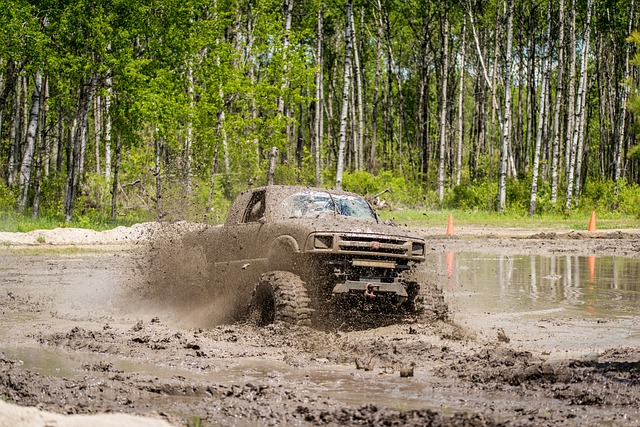Rock rails are critical safety features on RGV 4x4s, protecting against off-road obstacles and enhancing performance in rugged terrain. Common issues include wear & tear, rust, and improper installation, requiring regular inspections and timely rgv-4×4-repair solutions for optimal safety and stability. This guide equips owners with the knowledge to inspect, repair, and replace rock rails, ensuring secure and efficient off-road adventures.
Rock rails are essential components of 4×4 vehicles, providing critical protection against rollovers and enhancing off-road stability. This article delves into the role and importance of rock rails in RGV 4x4s, while also exploring common issues and problems that can arise. For those looking to maintain or repair their RGV’s rock rails, we offer a comprehensive step-by-step guide tailored for these robust vehicles. Learn how to ensure optimal performance and extend the lifespan of your RGV’s critical safety features through effective repair practices.
- Understanding Rock Rails: Their Role and Importance in 4×4 Vehicles
- Common Issues and Problems with RGV 4×4 Rock Rails
- Repairing and Maintaining Rock Rails: A Step-by-Step Guide for RGV 4x4s
Understanding Rock Rails: Their Role and Importance in 4×4 Vehicles

Rock rails are essential components in 4×4 vehicles, designed to provide added protection and stability during off-road driving. These robust metal bars are strategically positioned along the sides of the vehicle, close to the wheels, to deflect or absorb the impact of striking rocks, roots, or other obstacles. Their primary role is to safeguard the vehicle’s underbody and suspension system from potential damage, which is especially crucial in rugged terrain where the risk of such collisions is high.
For RGV-4×4-repair enthusiasts and off-roaders, understanding the importance of rock rails goes beyond their basic function. Properly installed rock rails can enhance a vehicle’s approach angle, breakover angle, and overall ground clearance, allowing for more aggressive driving and access to remote areas. Regular maintenance and inspection of these safety features are key, as damages or corrosion can compromise their effectiveness, making timely repairs vital for safe and reliable off-road adventures.
Common Issues and Problems with RGV 4×4 Rock Rails

Rock rails, designed to protect vehicles and their occupants during off-road adventures, are a crucial addition for RGV 4×4 enthusiasts. However, like any component, they’re not immune to issues. Common problems include wear and tear due to constant contact with rough terrain, leading to misalignments or damaged mounting points. Over time, rust can set in, especially in regions with harsh climates, compromising the structural integrity of the rock rails.
Another frequent issue is improper installation or fitment, which might occur during initial setup or subsequent RGV 4×4 repairs. This can result in rattling noises, irregular ride height, and even potential safety hazards. Recognizing these problems early on is vital for owners to conduct regular inspections and prompt RGV-4×4-repair solutions, ensuring their vehicle remains capable and safe off the beaten path.
Repairing and Maintaining Rock Rails: A Step-by-Step Guide for RGV 4x4s

Rock rails are essential components for off-road vehicles like the RGV 4×4, providing protection against rollovers and enhancing stability on rough terrain. Regular repair and maintenance are crucial to ensure their effectiveness. Here’s a step-by-step guide tailored for RGV 4×4 owners:
1. Inspection: Begin by thoroughly inspecting the rock rails for any signs of damage, including cracks, bends, or loose connections. Use a flashlight and magnifying glass for hard-to-reach areas. Pay close attention to the mounts, brackets, and any protective coatings.
2. Gather Tools and Parts: Before you start, assemble all necessary tools such as wrenches, screwdrivers, and a set of replacement rock rail parts (if repairs are needed). Ensure compatibility with your RGV 4×4 model. Many aftermarket suppliers offer high-quality replacements for common issues.
3. Remove Damaged Sections: Using the appropriate tools, carefully remove any damaged or faulty sections of the rock rails. This might involve detaching bolts and brackets to gain access. Take note of the original placement for easier reassembly.
4. Clean and Prepare: Clean the rail sections and surrounding areas with a suitable degreaser to ensure proper adhesion for new hardware. Remove all debris, rust, or old sealants.
5. Replace as Necessary: Install replacement parts according to the manufacturer’s instructions. Reattach brackets, tighten bolts, and secure any additional fasteners. Ensure everything is aligned correctly before tightening firmly.
6. Re-inspection: After completing the repairs, conduct a final inspection to verify that all components are securely fastened and in optimal condition.
Rock rails are an essential component of RGV 4×4 vehicles, offering critical protection and stability during off-road adventures. While they can encounter issues such as damage from rough terrain or wear and tear over time, proper maintenance is key to ensuring their longevity. By understanding the common problems and following a straightforward repair guide tailored for RGV 4x4s, owners can effectively address any concerns. Regular upkeep, including inspecting for signs of wear and replacing worn-out components, is crucial for optimal performance. With these steps, RGV 4×4 owners can keep their rock rails in top condition, enhancing both safety and the overall 4×4 experience.



